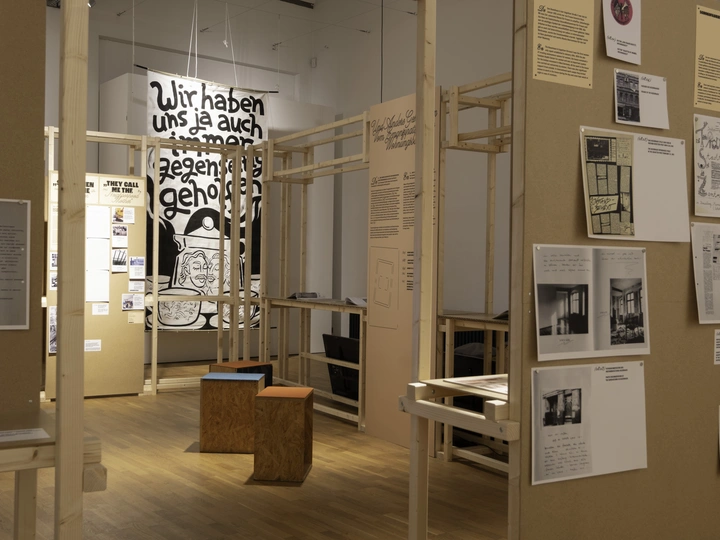Dessauer St &other Stories on Emancipatory Housing

Studio Böreck
Silja Glomb
Anna-Krisztina Máthé
Tarek Megahed
und. studio
Océane Vé-Réveillac
Océane Vé-Réveillac is a spatial planner, tutor and researcher interested into relations between the built environment and emancipation. She is currently teaching at the Berlin University of Arts and taught in several universities in Germany. She previously worked as the artistic coordinator for the research project Decolonizing Socialism. Entangled internationalism at the HEAD Genève. She holds an M.A. in Architecture from the Berlin University of Arts and an M.Sc. in Human Settlements from KU Leuven. She was involved in architectural and urban planning projects in offices such as Lacaton & Vassal, LIN and Particules. In 2018, she co-founded fem_arc, a feminist collective of architects working on projects from an intersectional feminist angle. Through community workshops, interventions, and installations, they challenged power structures to help create more inclusive spaces.
Silja Glomb is an architect and researcher interested in the socio-political and cultural aspects of architecture. She holds an MSc in Architecture from Bauhaus-University in Weimar, Germany and an MA in Forensic Architecture from the Centre for Research Architecture at Goldsmiths, University of London. She has also worked as an architect in Sweden and Germany for several years and is currently working at an architecture firm in Berlin. This variety of lived experiences has given her a wide-ranging knowledge in practicing architecture whilst also shaping her strong interest in international politics, social movements and critical spatial thinking. In her practice she examines the relation between the built environment and its urban, social and political realities. She is particularly interested in the processes in which architecture becomes complicit in the manifestation of structural inequalities and in developing ways of contesting those established hierarchies. Her work always follows an intersectional feminist approach.
The exhibition DESSAUER ST & OTHER STORIES ON EMANCIPATORY HOUSING is organized into 2 parts, presenting 11 stories based on previously unpublished archival materials, interviews, and artistic contributions.
This project results from a research we both started in University and aims to present feminist planning approaches and visibility for women architects.
The 1st part focuses on Block 2 on Dessauer Street in Berlin-Kreuzberg, a social housing complex created during the International Building Exhibition 1984-87. It brought together architects including Zaha Hadid, Myra Warhaftig, and Christine Jachmann to plan a housing block under the theme “emancipatory housing”. Using archives and interview, the exhibition traces its history from a feminist activist intervention to the realisation of dwellings with a feminist approach. A short film and a photo series from local artists reveal current resident experiences.
The 2nd part expands beyond Block 2 and highlights how feminists movements influenced architectural practices at the time. Women’s groups were key in resisting exclusionary policies and intersected with broader struggles involving migration, queerness, and squatting. These stories challenge typical architectural narratives focused on individual authorship, revealing how space production is embedded in collective and political processes.
The exhibition bridges historical research and contemporary art, making feminist housing struggles and women architects’ work tangible. It drew strong public interest, especially from planers, residents, and welcomed many student university visits. Jachmann's work has received renewed attention and, thanks to our support, her private archive has been recently transferred to the Berlin Academy of the Arts.
The exhibition could be restaged in new contexts with locally adapted content. A catalog, that has been requested by many visitors, could also be published to make the materials accessible long-term.